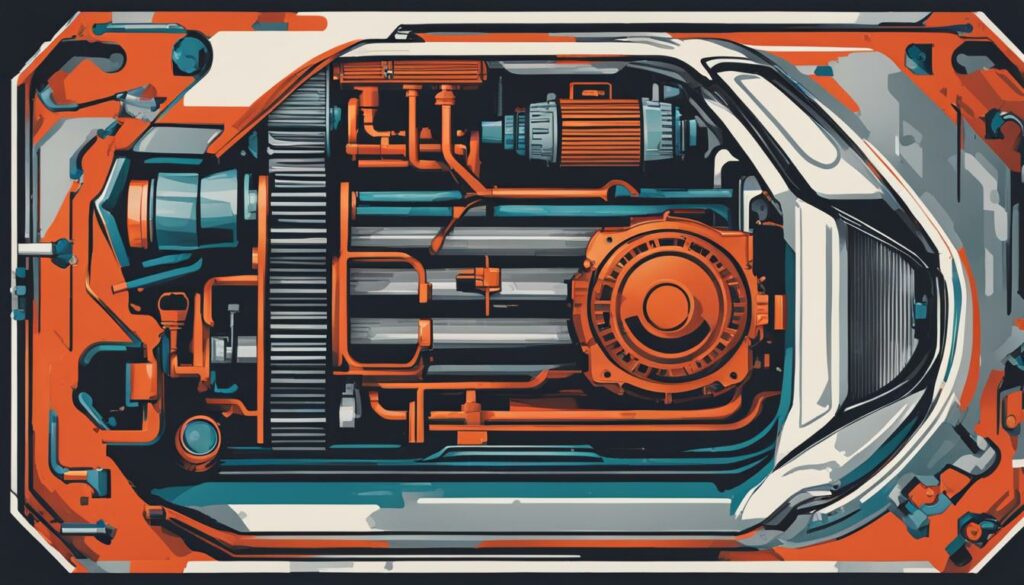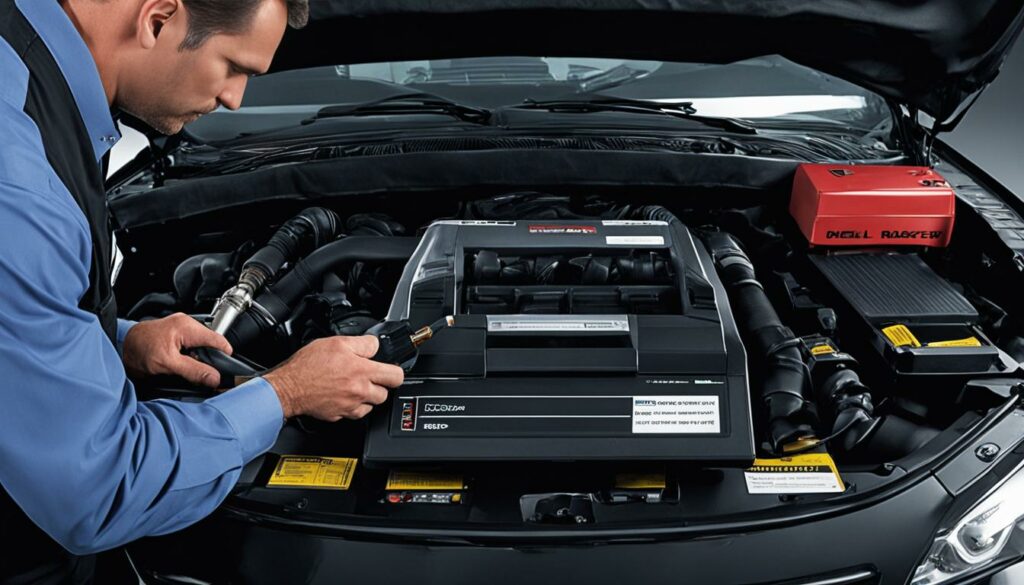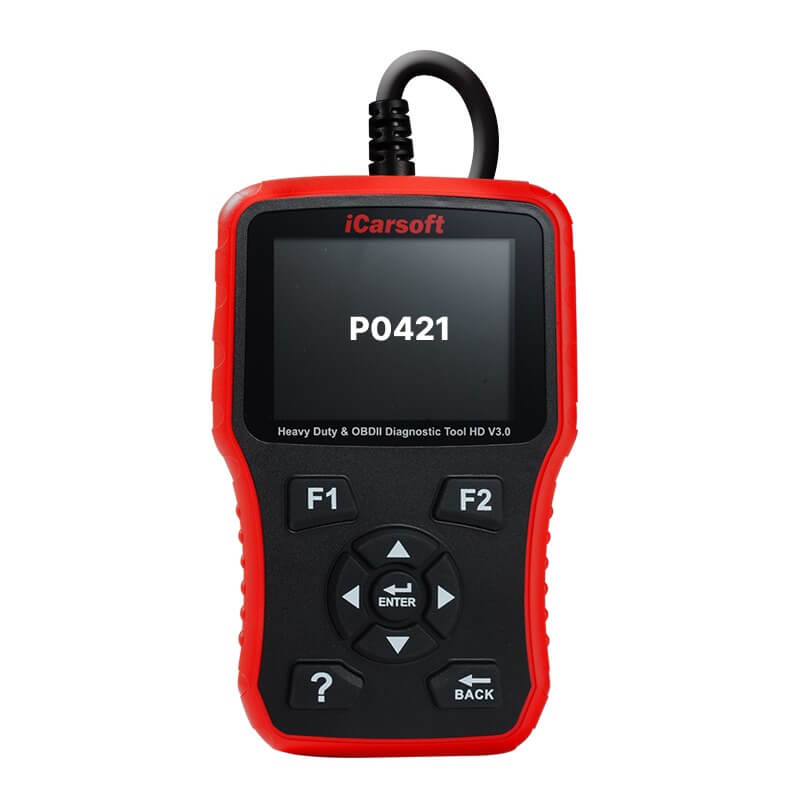P0421 – Warm Up Catalyst Efficiency Below Threshold
POSTED IN pcodes
Welcome to our article on the P0421 code, which relates to the warm up catalyst efficiency below threshold in your vehicle’s exhaust system. This code is important in ensuring that your catalytic converter operates as intended. Let’s dive into the details of what this code means and how it can be diagnosed and fixed.
The P0421 code, also known as warm up catalyst efficiency below threshold, is triggered when the Powertrain Control Module (PCM) detects that your vehicle’s catalytic converter is not functioning properly during the warm-up phase of the engine. This warm-up period is defined as the time from when the engine is started to when it has been running for five to ten minutes.
The PCM determines the efficiency of the catalytic converter by comparing the voltage readings from the upstream and downstream oxygen sensors. If these readings are ever identical, the PCM will set the P0420 code. However, if the readings are only identical during the engine’s warm-up period, the PCM will trigger the P0421 code.
Key Takeaways:
- The P0421 code relates to the warm up catalyst efficiency below threshold in your vehicle’s exhaust system.
- It sets when the PCM detects that the catalytic converter is not operating as intended during the engine’s warm-up phase.
- The PCM uses voltage readings from the upstream and downstream oxygen sensors to determine catalytic converter efficiency.
- Symptoms of a P0421 code include a check engine light, reduced performance, and a rotten egg smell.
- Possible causes of a P0421 code include a failed catalytic converter, issues with the oxygen sensors, wiring harness failure, and spark plug contamination.
Symptoms of P0421
When it comes to diagnosing and addressing the P0421 code, understanding the symptoms is crucial. Here are the key signs that may indicate a problem:
- Check Engine Light: The first indicator of a P0421 code is the illumination of the check engine light on your vehicle’s dashboard. This warning should not be ignored, as it highlights a potential issue with the warm up catalyst efficiency below threshold. If you notice the check engine light is on, it’s important to take action promptly.
- Reduced Performance: Another symptom of a P0421 code is reduced performance in your vehicle. This can manifest as decreased power, slower acceleration, or a general lack of responsiveness. The reduced performance may be a result of a clogged catalytic converter, which can cause back pressure in the exhaust system and impede proper engine function.
- Rotten Egg Smell: A distinctive rotten egg or sulfur smell is often associated with a P0421 code. Typically, the catalytic converter neutralizes hydrogen sulfide and prevents this odor from being noticeable. However, when the converter is not functioning properly, the smell becomes apparent. If you detect this unpleasant odor, it could be an indication of a catalytic converter issue.
It’s important to note that experiencing one or more of these symptoms does not necessarily mean that a P0421 code is present. However, it’s essential to have your vehicle diagnosed by a qualified technician to determine the root cause of these symptoms and address any underlying issues.
Buy tested tuning file for Adblue / EGR / DPF / Adblue off now!
Please refer to the image above for a visual representation of the symptoms associated with the P0421 code.
Causes of P0421
The P0421 code can be triggered by several causes related to the warm-up catalyst efficiency being below threshold. These causes include:
- Failed Catalytic Converter: The catalytic converter may fail due to clogging or damage caused by engine issues, resulting in reduced efficiency.
- Issues with Oxygen Sensors: When the oxygen sensors become clogged or fail internally, they may provide incorrect readings to the Powertrain Control Module (PCM), leading to an inaccurate assessment of the catalytic converter’s efficiency.
- Wiring Harness Failure: A failure in the wiring harness can affect all sensors, including the oxygen sensors, causing incorrect voltage readings and potentially triggering the P0421 code.
- Spark Plug Contamination: Contamination of the spark plugs can lead to engine issues that ultimately affect the performance of the catalytic converter.
These causes should be investigated when diagnosing the P0421 code to determine the appropriate course of action for resolving the issue.

“The main causes of a P0421 code include a failed catalytic converter, issues with the oxygen sensors, wiring harness failure, and spark plug contamination.”
Diagnosing and Fixing P0421
To diagnose a P0421 code, you can use an OBD-II reader to retrieve trouble codes and live data. This device will provide valuable information about the health of your vehicle’s emission system. Make sure the engine is turned off before connecting the OBD-II reader to the diagnostic port, usually located under the dashboard or near the steering column.
Once the OBD-II reader is connected, follow the on-screen instructions to retrieve the trouble codes. Look specifically for the P0421 code, which indicates a warm-up catalyst efficiency below threshold. Note down any other codes that may be present, as they can help in the diagnostic process.
In addition to using the OBD-II reader, a visual inspection can also be helpful in diagnosing the problem. Inspect the catalytic converter, wiring harness, and O2 sensor connector for any signs of corrosion or damage. Pay close attention to the condition of the catalytic converter, as it plays a crucial role in the emission system. If there are any visible issues, such as dents or holes, it may need to be replaced.
Another important test is the multimeter test, which allows you to check the voltage readings of the wiring harness and sensors. Use the multimeter to measure the voltage at the O2 sensor connector and compare it to the specifications provided by the manufacturer. If the readings are outside the recommended range, it indicates a problem with the wiring harness or sensors.
A vacuum test can also be beneficial in diagnosing a P0421 code. This test helps detect air leaks in the engine or exhaust system, which can affect the performance of the catalytic converter. Connect a vacuum gauge to a vacuum source on the engine and monitor the gauge reading. If the reading fluctuates or doesn’t hold steady, it indicates a potential vacuum leak that needs to be addressed.
“Diagnosing a P0421 code requires a combination of tools, including an OBD-II reader, visual inspection, multimeter test, and vacuum test.”
Fixing a P0421 code usually involves replacing either the catalytic converter or the O2 sensors, depending on the underlying issue. However, it is crucial to ensure that the catalytic converter has indeed failed before replacing it, as it can be an expensive component to replace.
Consult with a trusted mechanic or automotive specialist to accurately diagnose and fix the P0421 code. They have the expertise and tools necessary to identify the root cause of the problem and provide the most appropriate solution.

P0421 Diagnostic Process
| Step | Action |
|---|---|
| 1 | Connect OBD-II reader |
| 2 | Retrieve trouble codes |
| 3 | Perform visual inspection |
| 4 | Check voltage readings with a multimeter |
| 5 | Conduct a vacuum test |
| 6 | Replace faulty component (catalytic converter or O2 sensors) |
“Diagnosing and fixing a P0421 code requires a systematic approach, using diagnostic tools and performing various tests.”
Conclusion
The P0421 code indicates that your vehicle’s warm-up catalyst efficiency is below the threshold. This can be caused by various factors, including a failed catalytic converter, issues with the oxygen sensors, wiring harness failure, or spark plug contamination. To accurately diagnose the exact cause of the P0421 code, you will need to use diagnostic tools and perform tests.
Fixing the P0421 code typically involves replacing the faulty component, such as the catalytic converter or the oxygen sensors. It is crucial to address this issue promptly to ensure the proper functioning of your catalytic converter and the overall emission system of your vehicle, which ultimately affects your vehicle’s performance and environmental impact.
If you encounter the P0421 code, it is recommended to consult a professional mechanic or technician who can perform the necessary diagnostics and repairs. Remember, resolving the P0421 code will not only help your vehicle pass emissions tests but also contribute to a cleaner and more efficient driving experience.
FAQ
What is the P0421 code?
The P0421 code relates to the warm-up catalyst efficiency below threshold in your vehicle’s exhaust system. It sets when the catalytic converter is not operating as it should be during the engine’s warm-up phase.
What are the symptoms of P0421?
The symptoms of P0421 include a check engine light, reduced performance, and a rotten egg (sulfur) smell.
What are the main causes of a P0421 code?
The main causes of a P0421 code include a failed catalytic converter, issues with the oxygen sensors, wiring harness failure, and spark plug contamination.
How is a P0421 code diagnosed and fixed?
To diagnose a P0421 code, you can use an OBD-II reader to retrieve trouble codes and live data. Fixing a P0421 code usually involves replacing either the catalytic converter or the oxygen sensors.
What can happen if a P0421 code is not addressed?
If a P0421 code is not addressed, it can result in reduced performance and potential damage to the catalytic converter and other components of the exhaust system.


